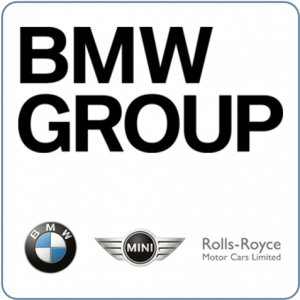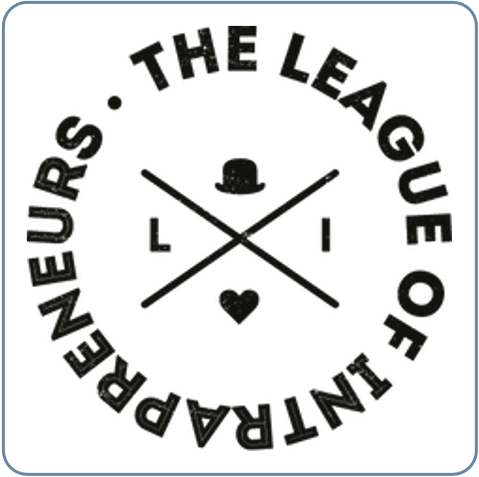Focus Mobility
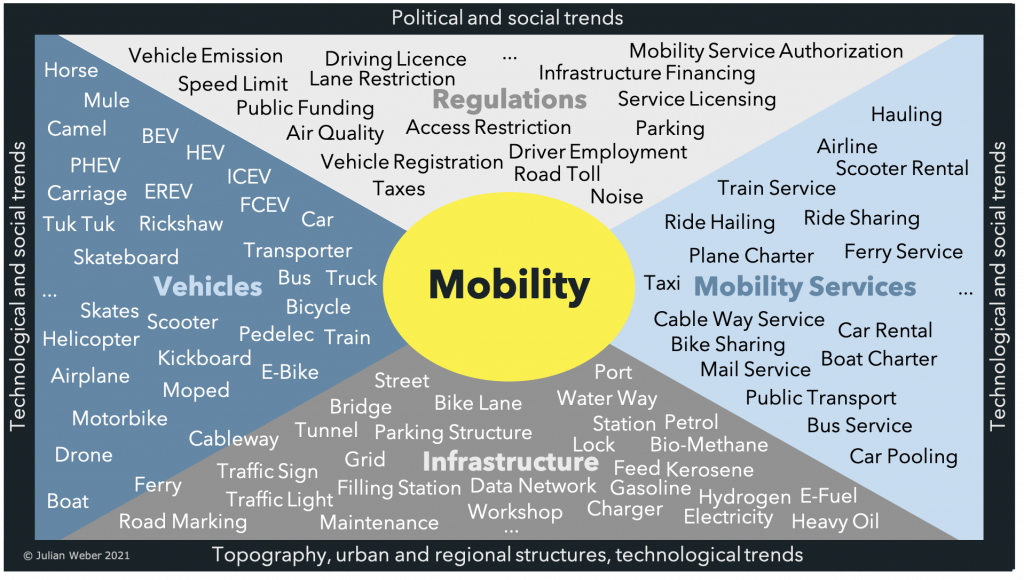
Mobility means moving people or things from one place to another with different vehicles and different mobility services – usually using existing infrastructure. Where many such mobility needs come together, the resulting mobility systems reach their limits, resulting in problems such as congestion, lack of parking, overcrowded trains or exceeding emission limits.
In order to keep mobility systems running today and at the same time prepare them for the future, the players involved must make decisions: vehicle manufacturers and mobility service providers need to know technical trends and which offers will be sustainably profitable in the respective area, while it is important for politicians to issue the right regulations and to provide and operate the necessary infrastructure. The overall framework is formed by social trends, which not only determine the mobility needs, but also which offers are used and which policies and politicians are supported.
Focus Product and Service Development
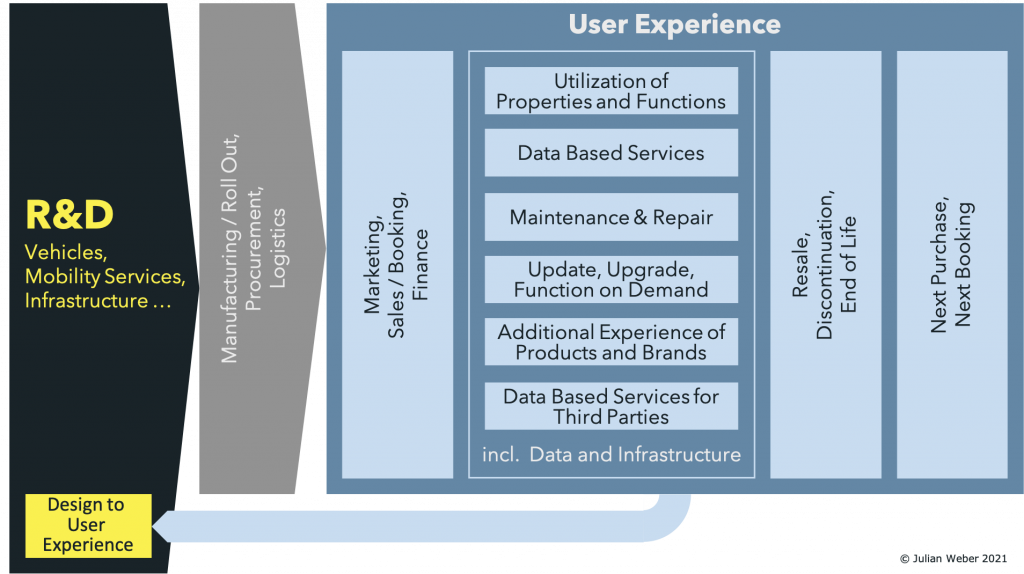
How well mobility “works” in total depends on how well vehicles, mobility services, infrastructure and regulation are coordinated, i.e. how well and holistically the user experience has been taken into account in its design. This is determined during their development, which is usually based on the strategy of the provider. Design to User Experience ensures that not only the use of a vehicle, a service or an infrastructure component, but also its overall experience is taken into account – for example, through the provision of repair and maintenance services, temporary additional functions or accompanying data-based services, as well as, for example, the resale of a vehicle, the termination of a mobility service or the dismantling of infrastructure.
Focus Digitalization
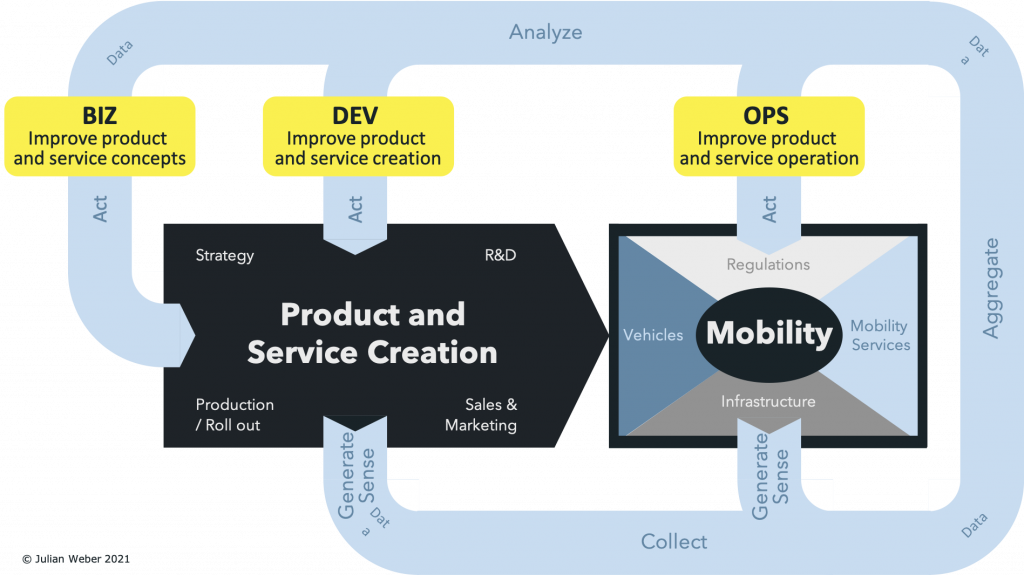
While mobility and its users focus on which products and services are offered and how they are operated, it is at least as important for their suppliers how these products and services are created. The development, production and sales processes together with operations determine the costs and quality and thus the achievable price and the cost-effectiveness of the respective offer.
As more and more vehicles and their drivers or passengers are connected to the Internet, mobility services are increasingly offered and booked via smartphones, and infrastructure is becoming more and more part of the IoT, an ever-increasing amount of mobility data is available. These are collected and evaluated, today primarily for the optimization of operation (OPS). However, a much greater potential of data usage lies in the analysis of which vehicles and services (BIZ) are offered and how they should ideally be provided (DEV).
Approach and Expertise
There is no model solution for mobility. Every city, every region, every enterprise, every person has its own requirements: what suits Amsterdam does not have to fit for Munich; what suits the employee from the center does not have to fit for the self-employed craftsman in the suburb; what suits the young family does not have to fit for the pensioner couple.
A critical prerequisite for the strategic orientation is the precise knowledge of one’s own situation as well as the technical, political and social framework conditions and trends. Only then can the right solution be put together from different elements for the specific case.
This approach is helped by my personal experience in areas such as e-mobility, digitalization, mobility as a service or vehicle development, which I was able to build up in my more than 20 years at the BMW Group and as an Adjunct Professor of Automotive Engineering at Clemson University. Through the intensive exchange with the international stakeholders of mobility – vehicle users, established manufacturers and start-ups, suppliers, scientists, mobility service providers and energy suppliers, but also journalists, investors, NGOs or representatives of municipalities and countries – I was able to get a fairly complete and coherent picture of the mobility of the future and its dependencies.
Mobility
- Long-time first line member of project i, the former mobility think tank of BMW, responsible for innovation projects e-mobility.
- Member of the expert commission for the International Stakeholder Dialogues, where the current issues of urban mobility were discussed with different stakeholders in international metropolises such as Berlin, Paris, London, Milan, Seattle, Chicago, Shanghai, Seoul or Tokyo.
- Speaker at more than 200 lectures, presentations and interviews.
- Author of books, articles, scientific papers and other publications.
Development
- More than 20 years of cross-departmental experience as a manager at BMW, including in-house consulting, product strategy, innovation management, research & development, development processes and aftersales.
- Adjunct Professor at Clemson University, Faculty of Automotive Engineering.
- Dr.-Ing. at the University (TH) Karlsruhe, Faculty of Mechanical Engineering.
Doctoral thesis on the use of virtual reality in product development. - Dipl.-Ing. Mechanical Engineering / Design and Development at the Technical University of Munich, Faculty of Mechanical Engineering.
- Author of books, articles, scientific papers and other publications.
Digitalization
- Digital transformation in traditional companies.
- Identification and implementation of use cases for the holistic use of vehicle data including vehicle E/E architecture, IT infrastructure and processes.
- Integration of the development of data-based functions and services into existing product development processes.
- Quality management for digital services.
- Application of agile methods and principles in automotive development.
